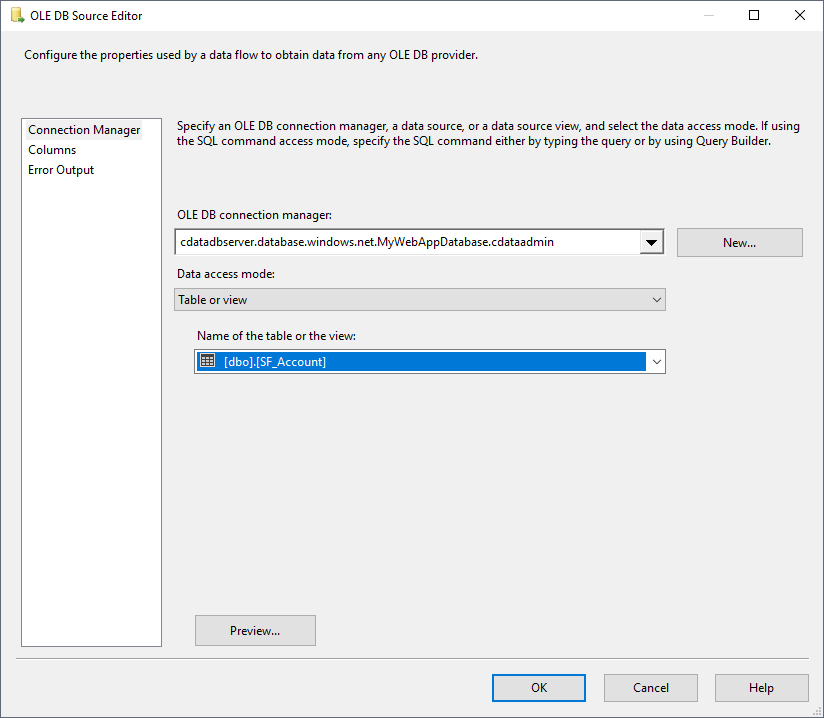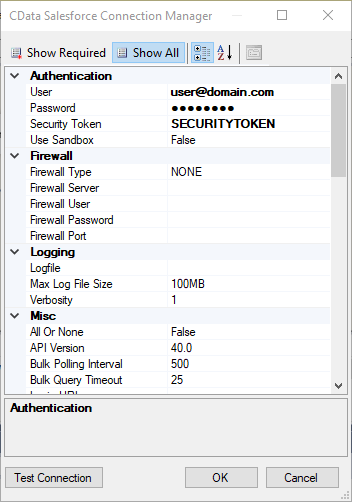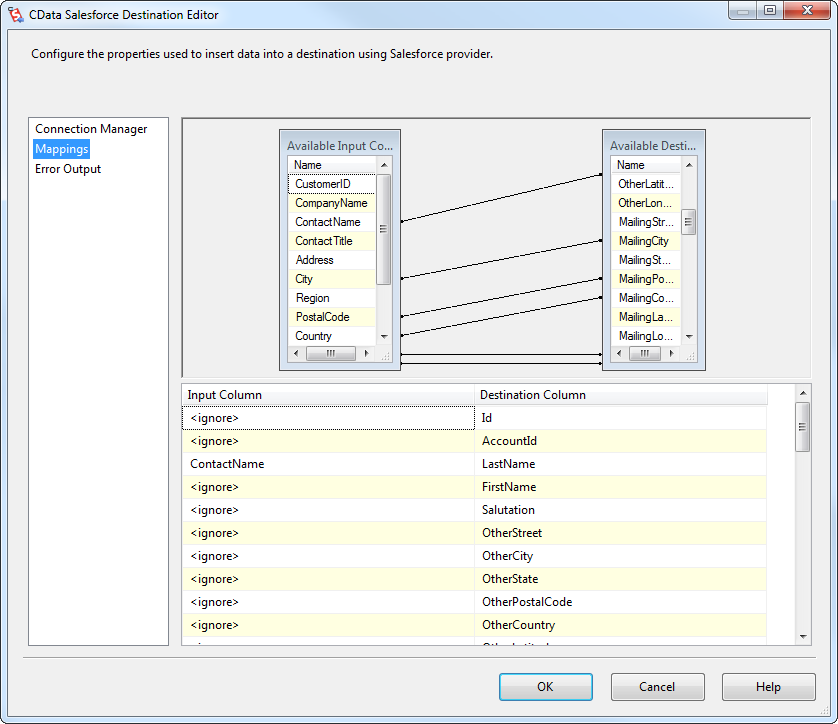Discover how a bimodal integration strategy can address the major data management challenges facing your organization today.
Get the Report →Export Data from SQL Server to Dynamics 365 Business Central through SSIS
Easily push SQL Server data to Dynamics 365 Business Central using the CData SSIS Tasks for Dynamics 365 Business Central.
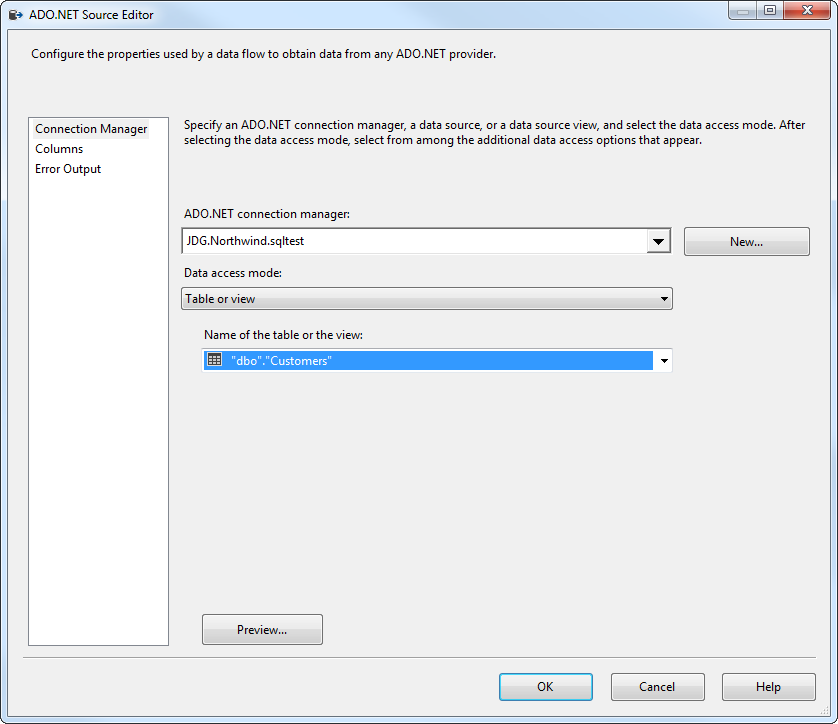
SQL Server databases are commonly used to store enterprise records. It is often necessary to move this data to other locations. The CData SSIS Task for Dynamics 365 Business Central allows you to easily transfer Dynamics 365 Business Central data. In this article you will export data from SQL Server to Dynamics 365 Business Central.
Add Source and Destination Components
To get started, add a new ADO.NET Source control and a new Dynamics 365 Business Central Destination control to the data flow task.
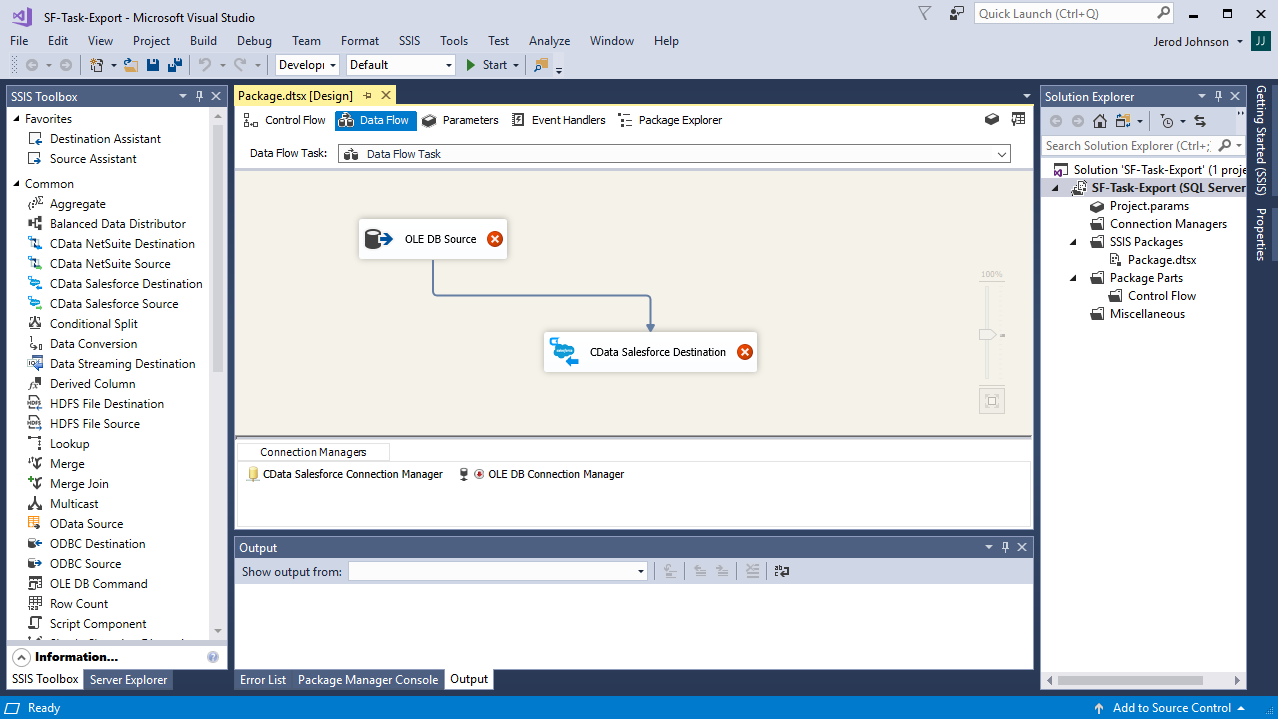
Configure the ADO.NET Source
Follow the steps below to specify properties required to connect to the SQL Server instance.
- Open the ADO.NET Source and add a new connection. Enter your server and database information here.
- In the Data access mode menu, select "Table or view" and select the table or view to export into Dynamics 365 Business Central.
- Close the ADO NET Source wizard and connect it to the destination component.

Create a New Connection Manager for Dynamics 365 Business Central
Follow the steps below to set required connection properties in the Connection Manager.
- Create a new connection manager: In the Connection Manager window, right-click and then click New Connection. The Add SSIS Connection Manager dialog is displayed.
- Select CData D365BusinessCentral Connection Manager in the menu.
-
Configure the connection properties.
To authenticate to Dynamics 365 Business Central, you must provide the User and AccessKey properties.
To obtain the User and AccessKey values, navigate to the Users page in Dynamics 365 Business Central and then click on Edit. The User Name and Web Service Access Key values are what you will enter as the User and AccessKey connection string properties. Note that the User Name is not your email address. It is a shortened user name.
To connect to data, specify OrganizationUrl. If you have multiple companies in your organization, you must also specify the Company to indicate which company you would like to connect to. Company does not need to be specified if you have only one company.
Configure the Dynamics 365 Business Central Destination
In the destination component Connection Manager, define mappings from the SQL Server source table into the Dynamics 365 Business Central destination table and the action you want to perform on the Dynamics 365 Business Central data. In this article, you will insert Accounts entities to Dynamics 365 Business Central.
- Double-click the Dynamics 365 Business Central destination to open the destination component editor.
- In the Connection Managers tab, select the connection manager previously created.
-
In the Use a Table, menu, select Accounts.
In the Action menu, select Insert.
![The destination table and action to be performed.]()
-
On the Column Mappings tab, configure the mappings from the input columns to the destination columns.
![The mappings from the SQL Server source to the SSIS destination component.]()
Run the Project
You can now run the project. After the SSIS Task has finished executing, data from your SQL table will be exported to the chosen table.
